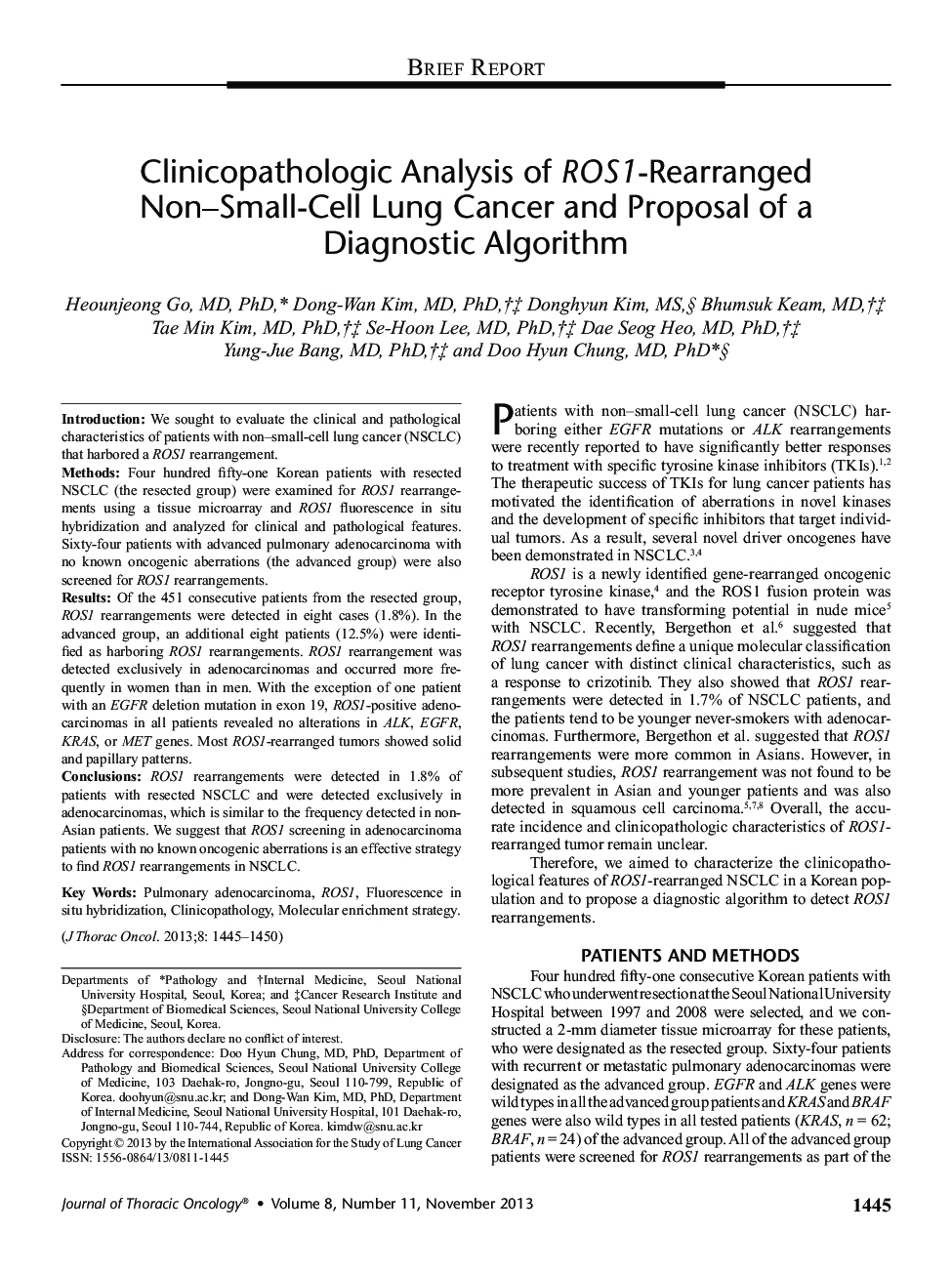| Article ID | Journal | Published Year | Pages | File Type |
|---|---|---|---|---|
| 3989962 | Journal of Thoracic Oncology | 2013 | 6 Pages |
IntroductionWe sought to evaluate the clinical and pathological characteristics of patients with non–small-cell lung cancer (NSCLC) that harbored a ROS1 rearrangement.MethodsFour hundred fifty-one Korean patients with resected NSCLC (the resected group) were examined for ROS1 rearrangements using a tissue microarray and ROS1 fluorescence in situ hybridization and analyzed for clinical and pathological features. Sixty-four patients with advanced pulmonary adenocarcinoma with no known oncogenic aberrations (the advanced group) were also screened for ROS1 rearrangements.ResultsOf the 451 consecutive patients from the resected group, ROS1 rearrangements were detected in eight cases (1.8%). In the advanced group, an additional eight patients (12.5%) were identified as harboring ROS1 rearrangements. ROS1 rearrangement was detected exclusively in adenocarcinomas and occurred more frequently in women than in men. With the exception of one patient with an EGFR deletion mutation in exon 19, ROS1-positive adenocarcinomas in all patients revealed no alterations in ALK, EGFR, KRAS, or MET genes. Most ROS1-rearranged tumors showed solid and papillary patterns.ConclusionsROS1 rearrangements were detected in 1.8% of patients with resected NSCLC and were detected exclusively in adenocarcinomas, which is similar to the frequency detected in non-Asian patients. We suggest that ROS1 screening in adenocarcinoma patients with no known oncogenic aberrations is an effective strategy to find ROS1 rearrangements in NSCLC.
